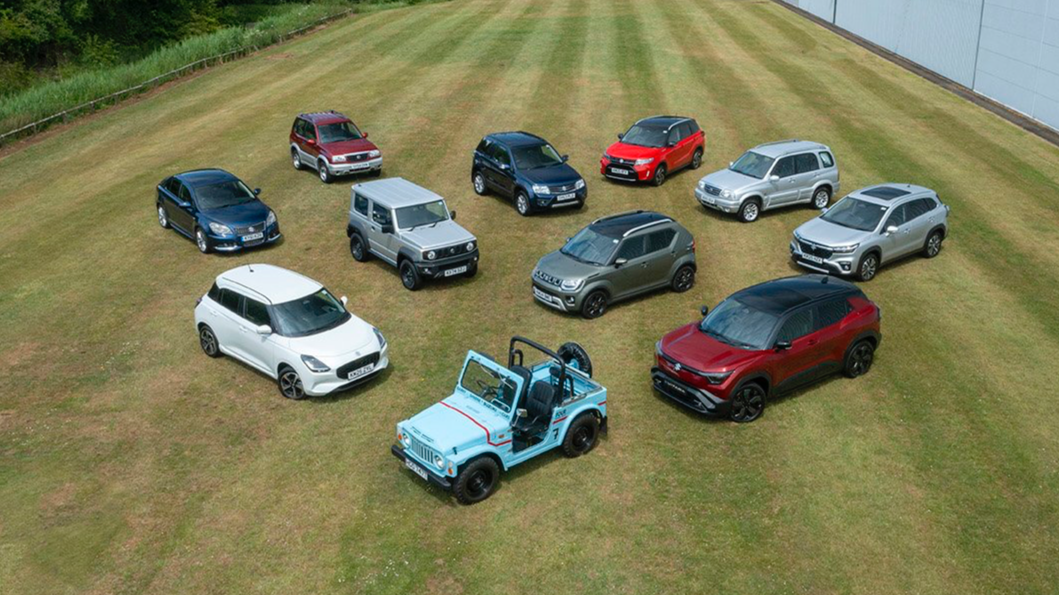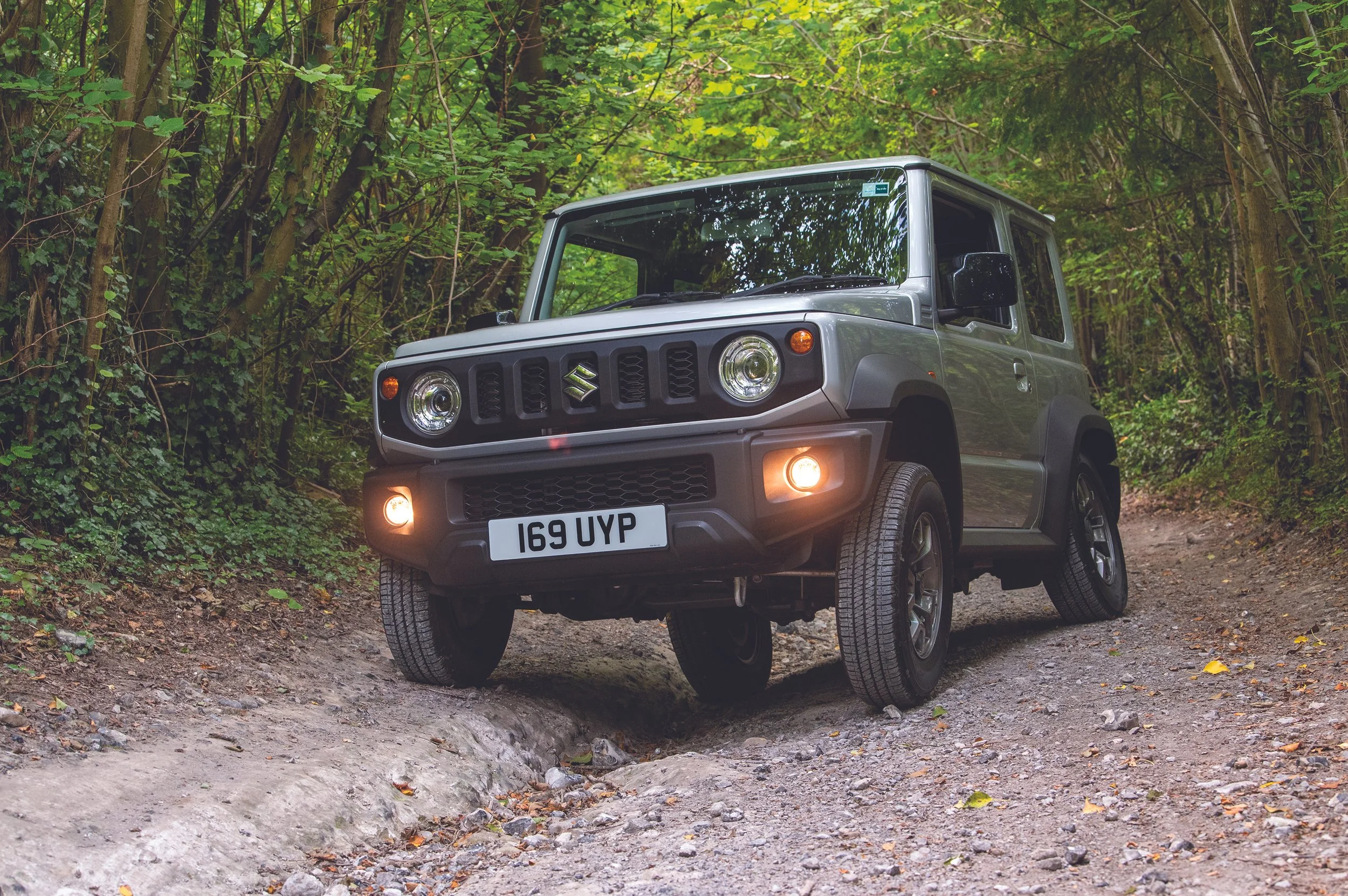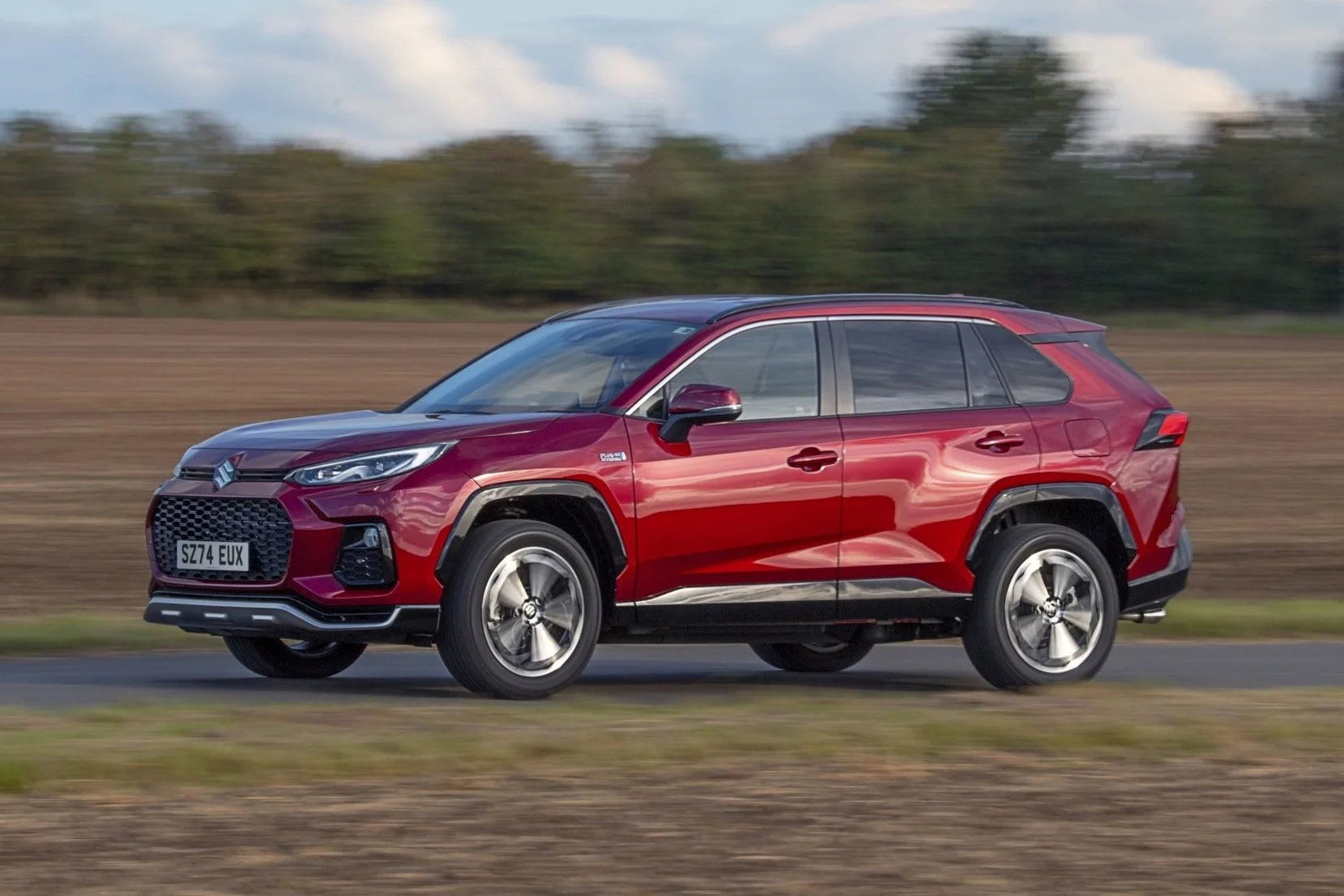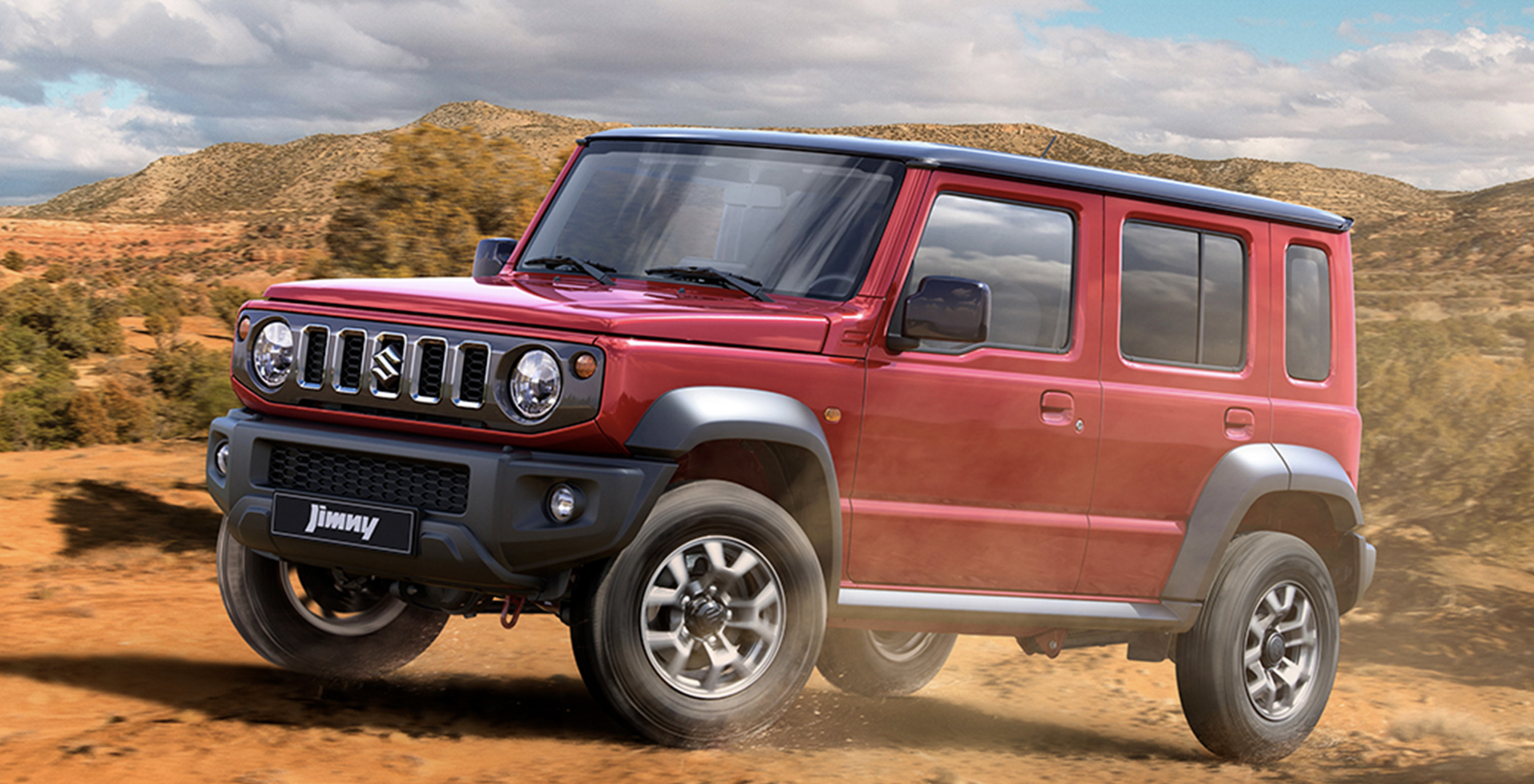Suzuki ALLGRIP: 55 Years of Grit, Gears and Getting Places Others Couldn’t
Let’s be honest, when someone says “off-roader,” most folk picture a Defender caked in cow muck or a jacked-up Hilux bullying puddles in Waitrose car park. But in a quiet corner of the 4x4 world, Suzuki’s been quietly doing its own thing for 55 years, building dinky little mountain goats that’ll cheerfully scramble up a grassy hill while the bigger boys are spinning their fancy alloys. And at the heart of that success is ALLGRIP, Suzuki’s catch-all term for its four-wheel drive know-how.
Now, ALLGRIP as a name didn’t show up until 2013, but Suzuki’s 4x4 journey started way back in 1970, when bell-bottoms were in, flared nostrils were fashionable, and nobody had ever heard of hill descent control.
The LJ10: Where it all began
Picture it. The year is 1970. Suzuki rolls out the LJ10 (Light Jeep), a 360cc two-stroke oddball that looked like a Tonka toy and sounded like a chainsaw with asthma. It had leaf springs all round, weighed less than a wheelie bin, and had proper part-time 4WD with a transfer case. No electronics. No nonsense. Just three tiny cylinders, a ladder chassis, and a “let’s go anywhere” attitude.
It wasn’t fast. Or big. Or particularly comfortable. But it worked. Farmers loved it. Forest rangers adored it. It went places even Land Rovers would think twice about, usually because it was so light, it just skimmed over the top of the mud.
Ah, the LJ80 – the first Suzuki 4x4 to grace UK shores and the one that properly kicked things off over here. Introduced in 1979, it followed on from the earlier LJ10 and LJ50 in Japan, but came with a bit more puff thanks to its 797cc four-cylinder petrol engine, yes, that’s four cylinders powering something the size of a shopping trolley. With a whopping 41bhp under the bonnet (or somewhere in the general vicinity), it could just about keep up with traffic, but off-road is where it really shone. Short overhangs, light kerb weight, and proper part-time 4WD with a low-range transfer box meant it would happily scramble up muddy banks while bigger, pricier 4x4s stood around scratching their wheelarches.
It was basic. Really basic. Think vinyl seats, hose-it-out interior, and a heater that was more of a rumour than a feature. But that was part of the charm. It didn’t pretend to be posh, it just got on with the job. Farmers loved it. So did off-roaders, and so did anyone who fancied a cheap, go-anywhere machine that looked like a shrunken Land Rover and cost less than the dealer’s coffee machine. In hindsight, the LJ80 set the tone for Suzuki’s 4x4 future: small, scrappy, and way more capable than it had any right to be.
The 1980s: SJs, shoulder pads and Saturday morning cartoons
Enter the Suzuki SJ, known in the UK as the SJ410 and SJ413. If you grew up in the '80s, chances are you either owned one, crashed one, or spent most of your teenage years trying to tip one over. With its boxy shape and leaf-sprung ride, it looked like a fridge on wheels, but again, it was proper 4x4 kit in a teeny, affordable package. I remember trying to get my dad to buy one, but went for a Mini Metro instead!
It had part-time four-wheel drive, selectable via a transfer lever (none of this push-button fluff), and would happily crawl, clatter and bounce its way across any field, quarry or rutted farm track. It was light, lively, hilarious and utterly lovable.
The SJ became the first Suzuki 4x4 to be truly embraced in the UK, especially among off-road enthusiasts who didn’t fancy remortgaging the house for a Range Rover.
The Vitara years: Soft-roader or secret hero?
Then came the Vitara, first launched in 1988. This was Suzuki’s first real stab at a “civilised” 4x4, with rounder lines, coil springs, and an interior that didn’t look like it came out of a fishing tackle box. It still had low-range gears and selectable four-wheel drive, but it started appealing to townies and suburbanites as well as farmers and green-laners.
Crucially, the Vitara was smaller and cheaper than rivals like the RAV4 and Freelander, yet just as capable off-road if you knew what you were doing. Plus, you could get it in funky two-tone colours with a ragtop roof, so you could look cool while getting stuck in a bog.
The Grand Vitara followed in 1998, and here things got more serious. Bigger engines. More refinement. But still, under the skin, a proper transfer box with high and low ratios, plus a ladder frame underneath (at least early on). The Grand Vitara became a favourite of rural vets, dog walkers, and people who wanted a Disco but also wanted a pension.
Jimny: The cult hero
We can’t talk about Suzuki 4x4s without talking about the Jimny. Launched in 1998 (in its modern form), the Jimny was, and still is, one of the most charming, capable and daft little things ever to wear four driven wheels.
With solid axles front and rear, a ladder frame chassis and proper low-range transfer gears, it was like a pint-sized Defender, but with half the rust and none of the price tag. It might have looked like a Fisher Price toy, but point it at a muddy hill or snow-covered back lane, and it’d just keep going. It became a green-laning legend and an icon of no-nonsense off-road motoring.
The current Jimny, launched in 2018, added modern safety kit and a cult following that makes Glastonbury tickets look easy to get. It’s now commercial-only in the UK due to emissions rules, but Suzuki wisely saw the demand and kept it on the books.
And yes — it still has a proper transfer lever. Praise be.
ALLGRIP arrives (and gets confusing)
By 2013, Suzuki realised that “part-time 4WD with low range” didn’t quite fit on a brochure next to the Bluetooth info. So, they bundled all their clever traction gubbins under the snappy umbrella name: ALLGRIP.
But ALLGRIP isn’t just one system, it’s three (which is very Suzuki: simple in spirit, slightly baffling in execution). Let’s break it down:
ALLGRIP Auto
Found on cars like the Ignis and older Swift 4x4s, this is basically a viscous coupling system. Most of the time, it drives the front wheels. If things get slippy, it automatically sends power to the rear. It’s like a safety net, great for wet roads, snow, or grassy campsites, but not designed for axle-twisting off-roading.
ALLGRIP Select
This is the clever one, fitted to Vitara and S-Cross models. It uses an electronically controlled clutch to juggle torque between the front and rear axles. There are four modes: Auto, Sport, Snow, and Lock. It’s intuitive, quick-reacting, and surprisingly capable off-road when paired with decent tyres.
Think of it like a posh version of ALLGRIP Auto, less effort than the old-school transfer lever, but still with a bit of control for the driver. Handy for everything from Yorkshire snowdrifts to towing a trailer out of a wet field.
ALLGRIP Pro
This is the real deal. Found in the Jimny, it’s got a transfer lever, low-range gears, and zero fluff. You’re in control. You break it, it’s your fault. Just how proper 4x4 folk like it.
ALLGRIP goes hybrid (sort of)
As emissions rules got tighter than a drum skin, Suzuki leaned heavily into mild-hybrids and Toyota-sourced full hybrids. Some of these, like the Swace and Across – are more “on-road focused,” but the Across (a rebadged RAV4 PHEV) does get electric AWD via a second motor on the rear axle. It’s not ALLGRIP in name, but it counts in spirit, and will get you out of a muddy showground with minimal drama.
Still, it’s the Jimny, Vitara, Ignis, and S-Cross that carry the ALLGRIP banner most proudly today.
Real-world usefulness
What makes Suzuki’s 4x4s, and ALLGRIP in general, so beloved isn’t just the badge or the brochure stats. It’s the fact that they’re usable. Affordable. Reliable. Light enough to float over ruts rather than sink into them. You don’t need a PhD in electronics to operate them. They’re not posing as lifestyle vehicles, they actually do the lifestyle.
Over the years we’ve used Suzukis to tow trailers, launch boats, climb snowy hills, explore green lanes, and occasionally rescue flashier vehicles from embarrassing situations. And you don’t mind scratching one, because you didn’t have to sell a kidney to buy it.
They’re the sort of cars where the dog can jump in muddy, and no one flinches. Where you can stick a CB aerial on the bonnet, a tow rope in the boot, and just get on with it.
Verdict: 55 Years of Grafting
Suzuki doesn’t make a fuss. It never has. While other brands stick huge chrome letters on the back saying “MOUNTAIN EDITION” and brag about 4x4 modes called “Falcon Ice Talon,” Suzuki just quietly gets on with it. Its ALLGRIP systems, whether Auto, Select or Pro, reflect that ethos: simple, effective, and more than up to the job.
In a world where SUVs are getting heavier, more complicated and absurdly expensive, Suzuki’s approach feels refreshingly honest. The cars aren’t massive. The tech isn’t flashy. But by heck, they work.
So here’s to 55 years of ALLGRIP, even if it wasn’t always called that, and to the tiny trucks, square little Jimnys, and cheeky Vitaras that proved you don’t need to be big to be bold.
Now if Suzuki could just sell their five-door Jimny fitted with a 1.4ltr BoosterJet and six-speed auto, the automotive world be a much better place.




















